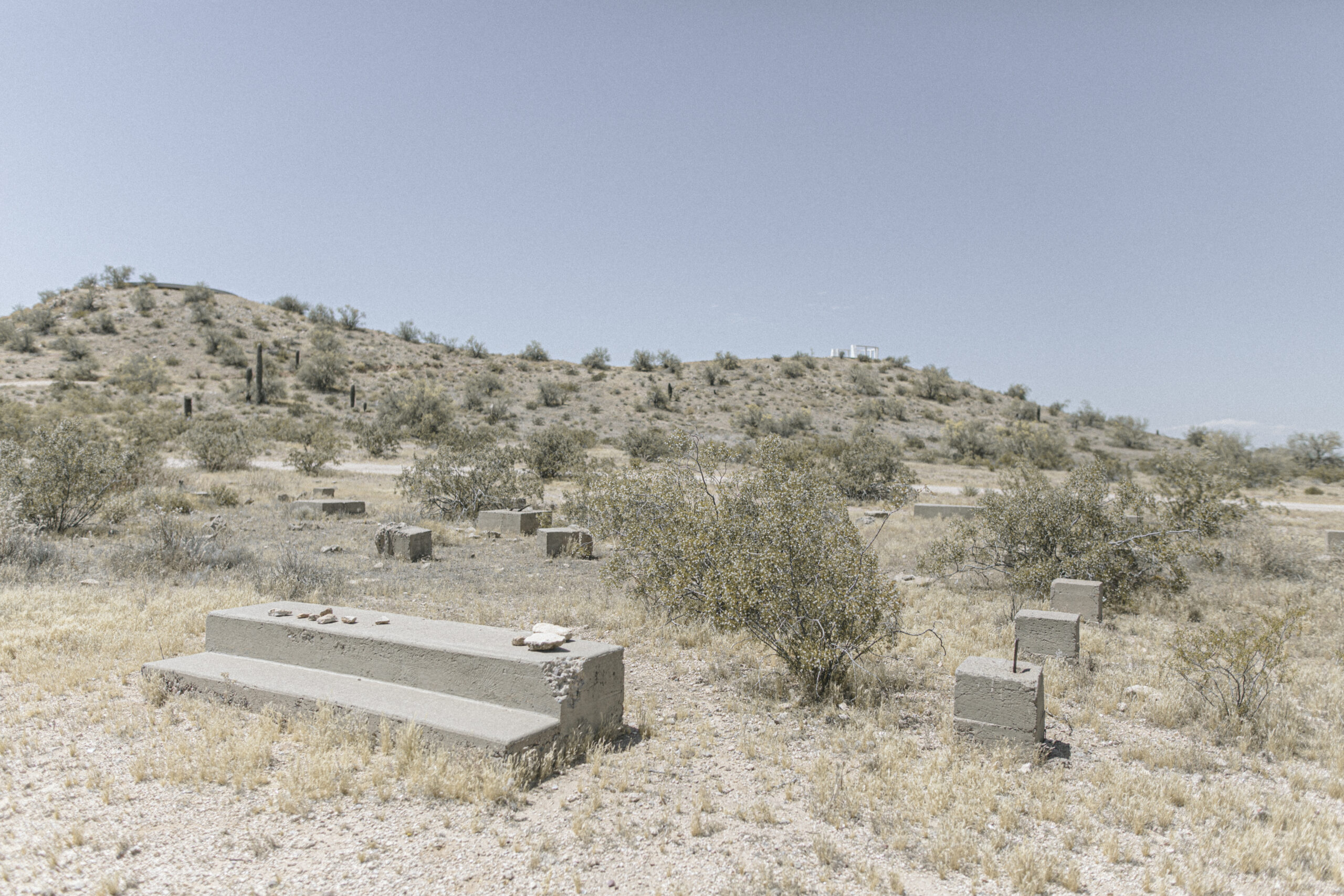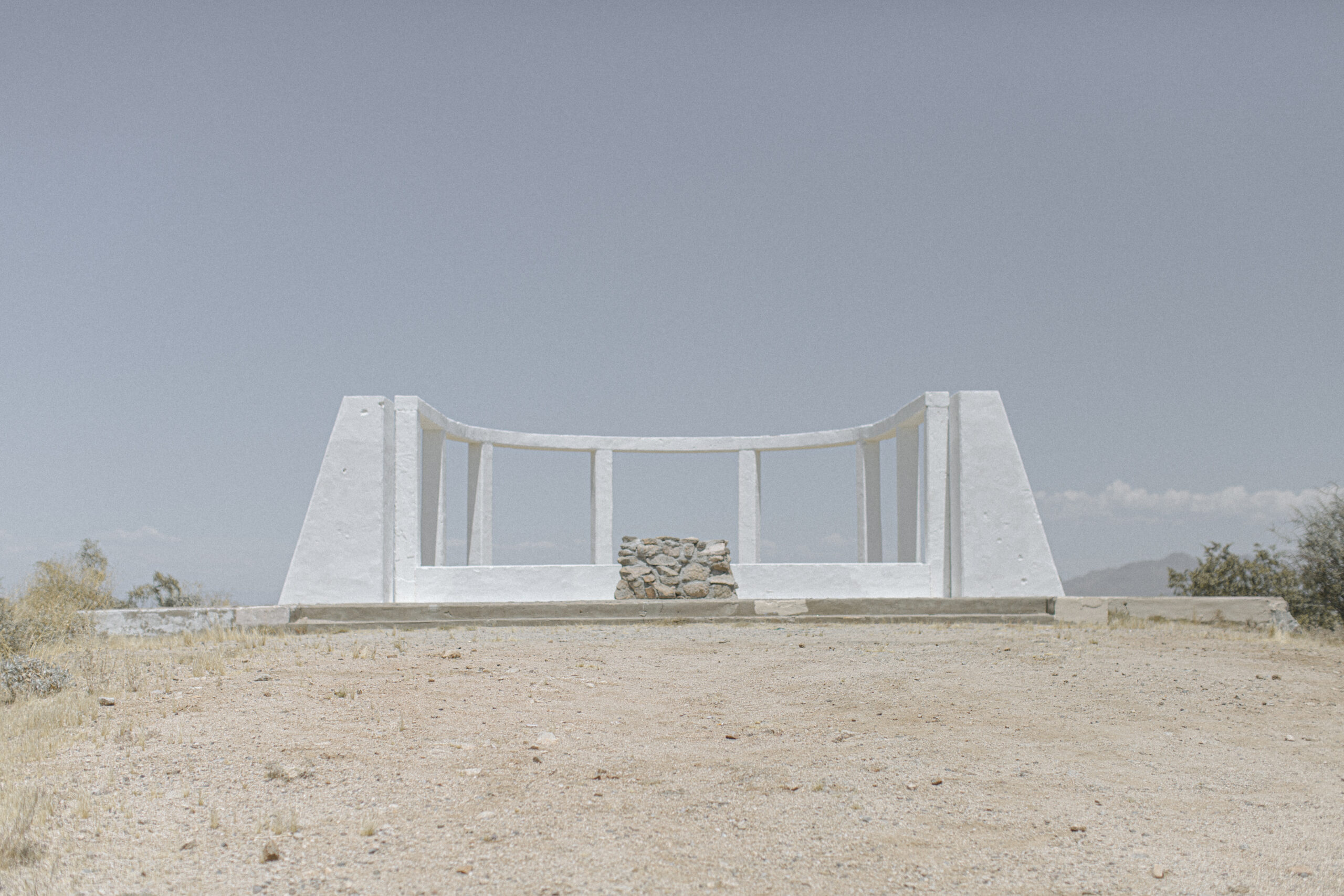
Located 50 miles south of Phoenix, Rivers Relocation Center—known as Gila River—is a War Relocation Authority concentration camp located on the ancestral land of the Akimel O’otham and Pee-Posh of the Gila River Indian Community. It was named after Jim Rivers, the first Akimel O’otham killed in World War I.
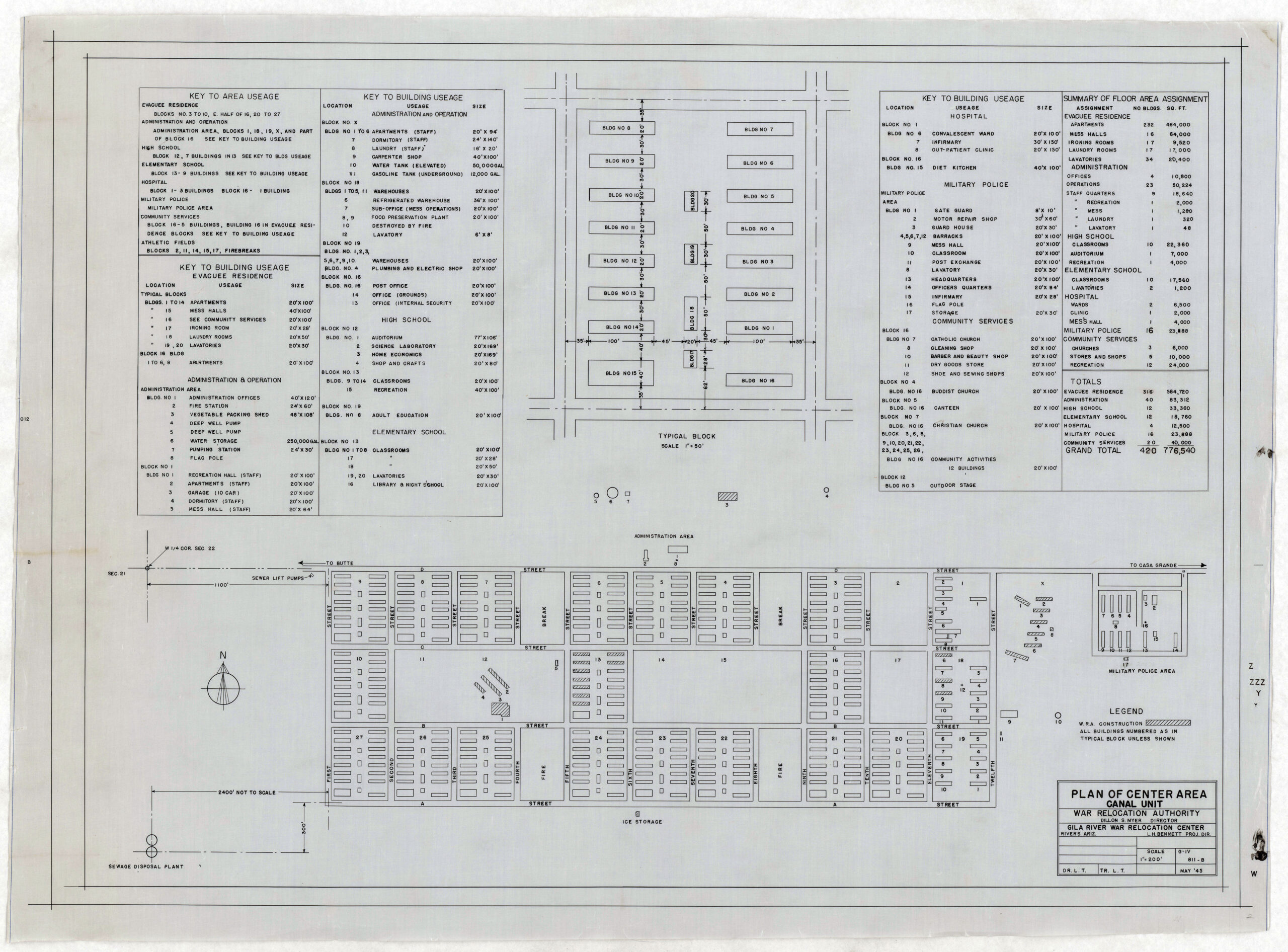
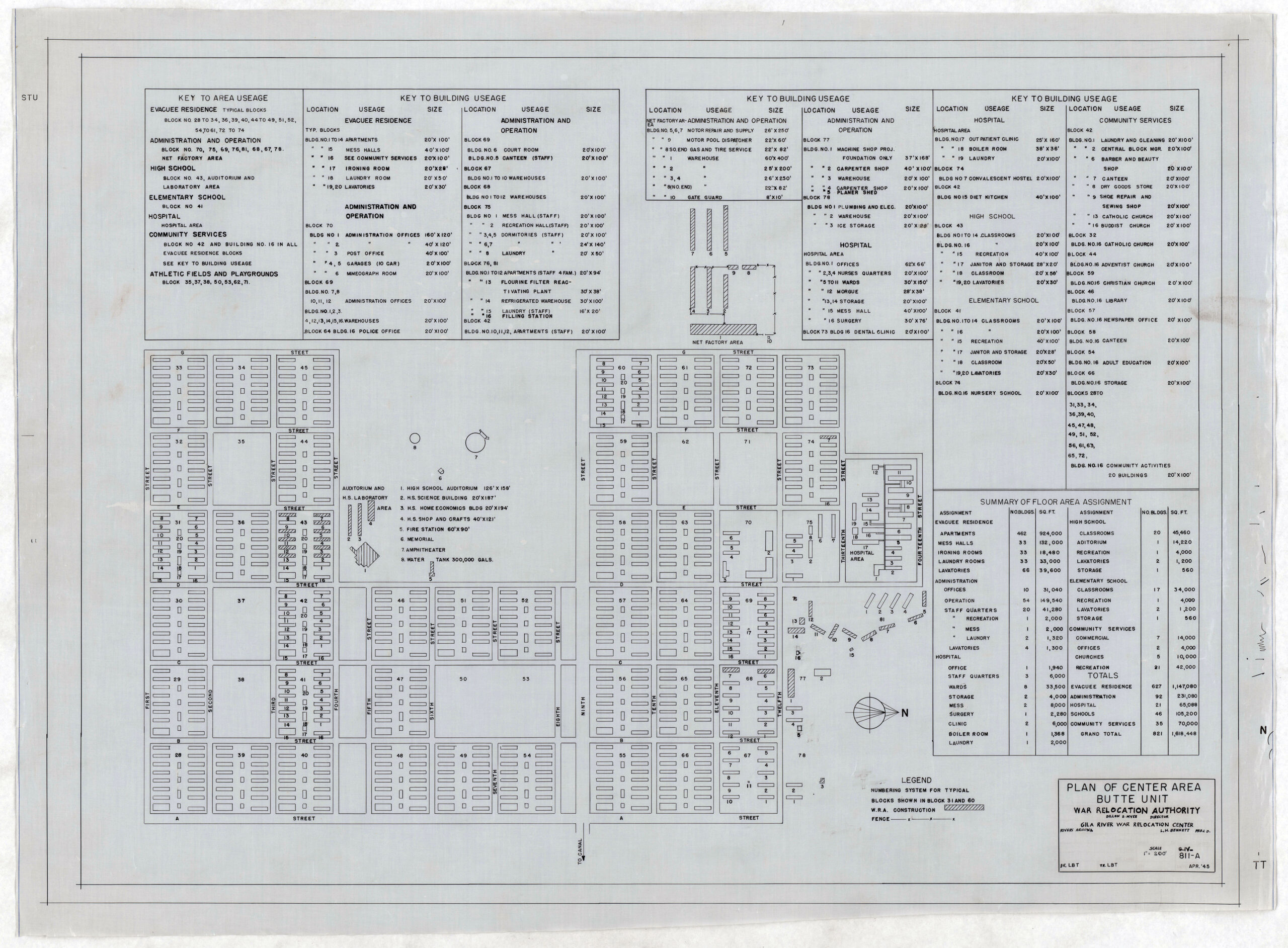
The War Relocation Authority‘s master plot plan for Gila River. Courtesy of the National Archives and Records Administration.
The harsh desert landscape surrounding the 16,500-acre concentration camp created extreme living conditions. Temperatures soared as high as 125 degrees in summer, while winter nights could drop as low as 35 degrees below zero. The camp was divided into two separate sites—Canal and Butte—spaced three and a half miles apart.
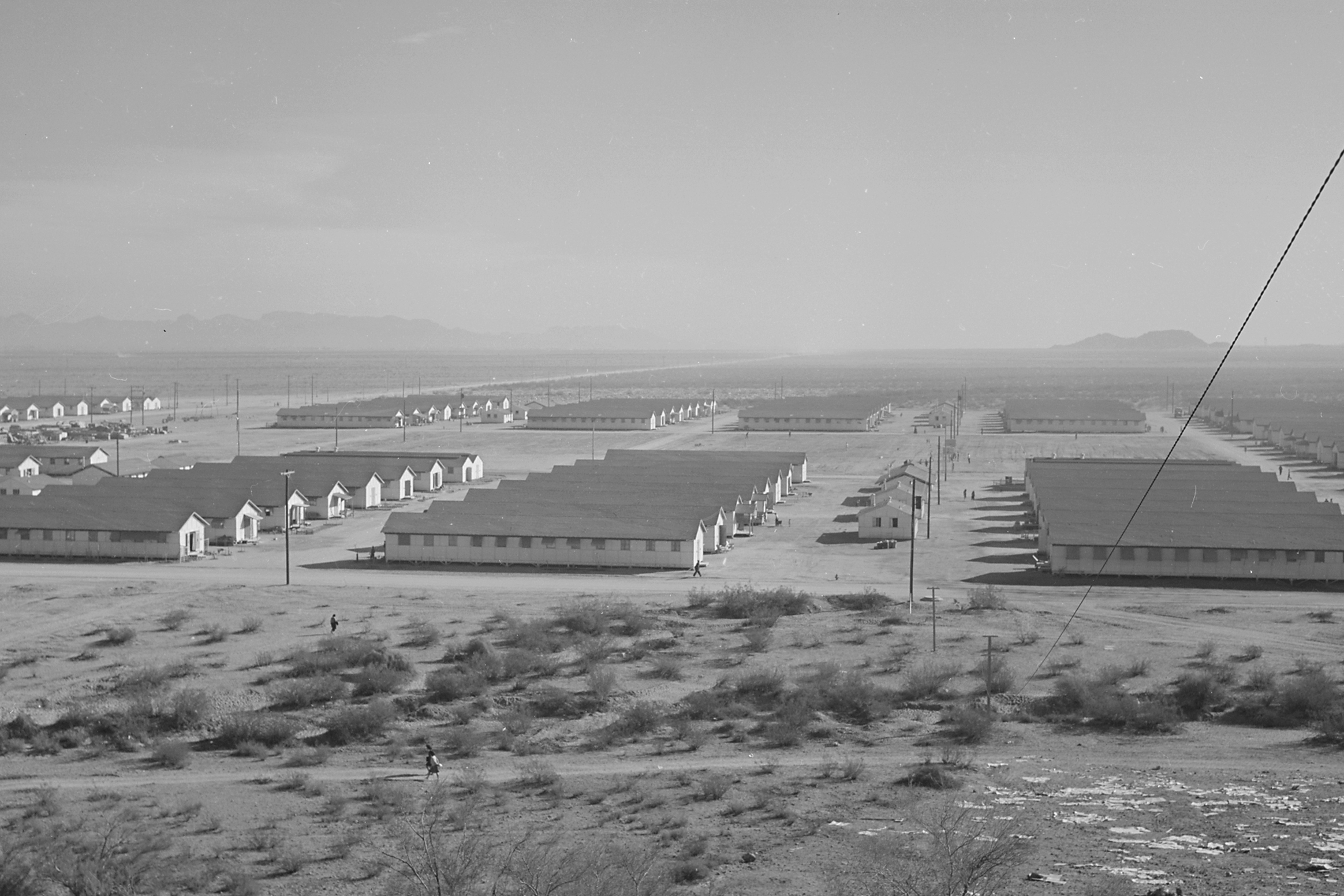
A view of the northwest section of Butte, one of two separate camps at Gila River. Courtesy of the National Archives and Records Administration.
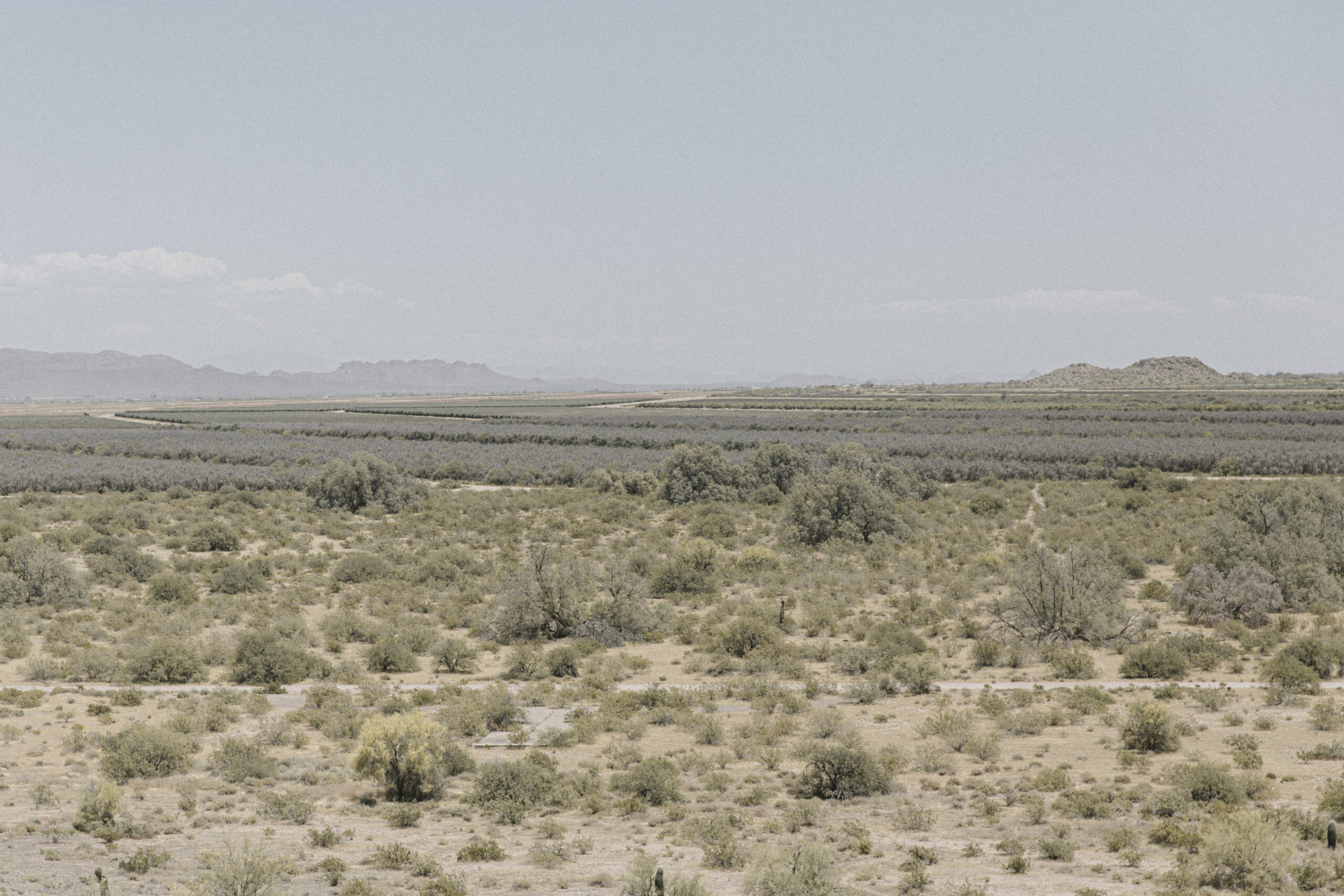
A view of the northwest section of Butte, one of two separate camps at Gila River. May 14, 2024.
The War Relocation Authority constructed white beaverboard barracks to house incarcerees, but they provided little protection from the extreme heat and cold. Incarcerees found ways to adapt, with some digging underground spaces beneath their barracks to escape the heat, while others constructed makeshift swamp coolers and fish ponds to cool their surroundings. In an effort to improve their environment, trees were planted to provide shade, though they offered little relief from the intense desert sun.
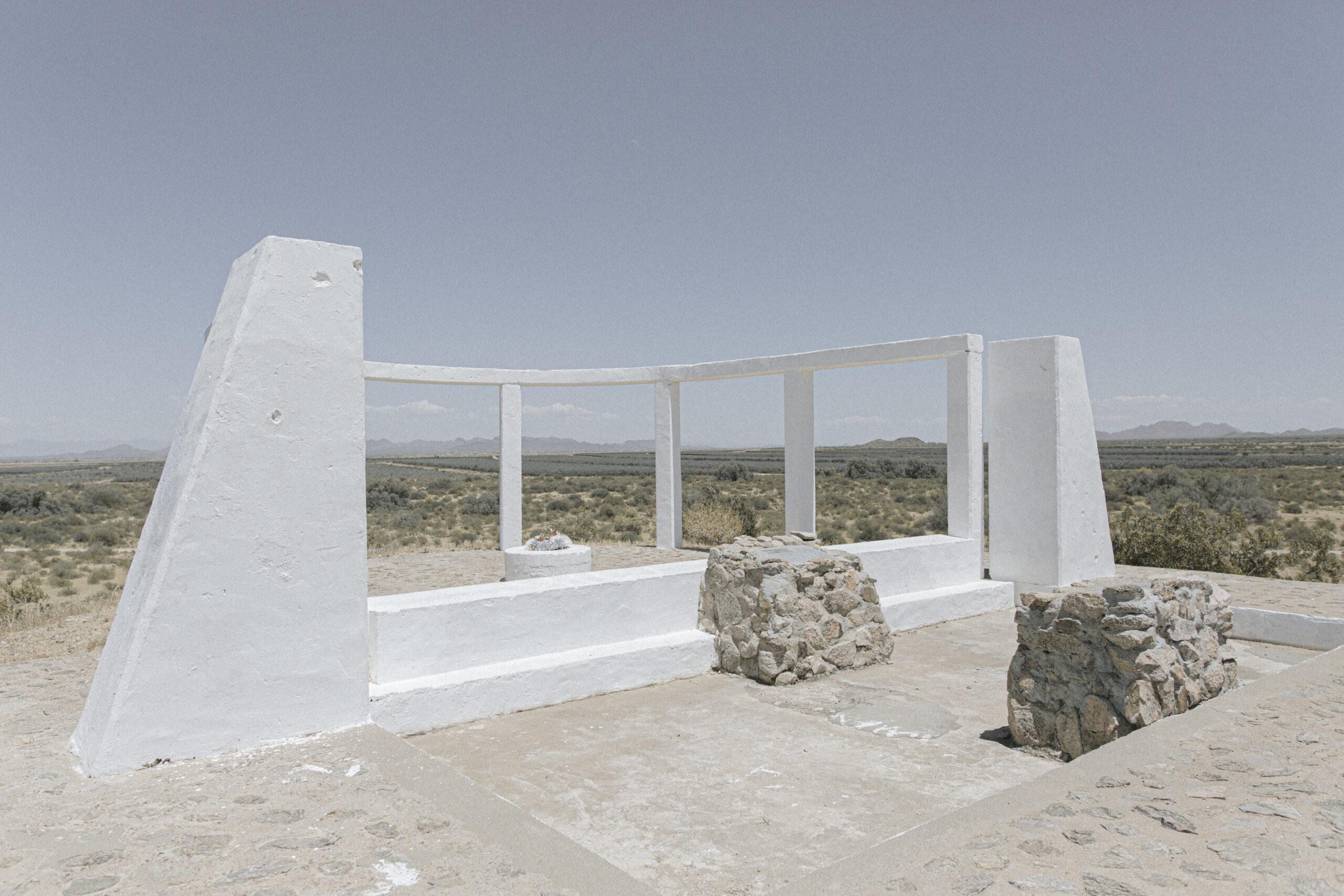
This half circle monument—which was constructed by Issei incarcerees in 1944 to commemorate those who served in the 442nd Regimental Combat Team—is one of the few remaining structures at the Butte section of the Gila River concentration camp.
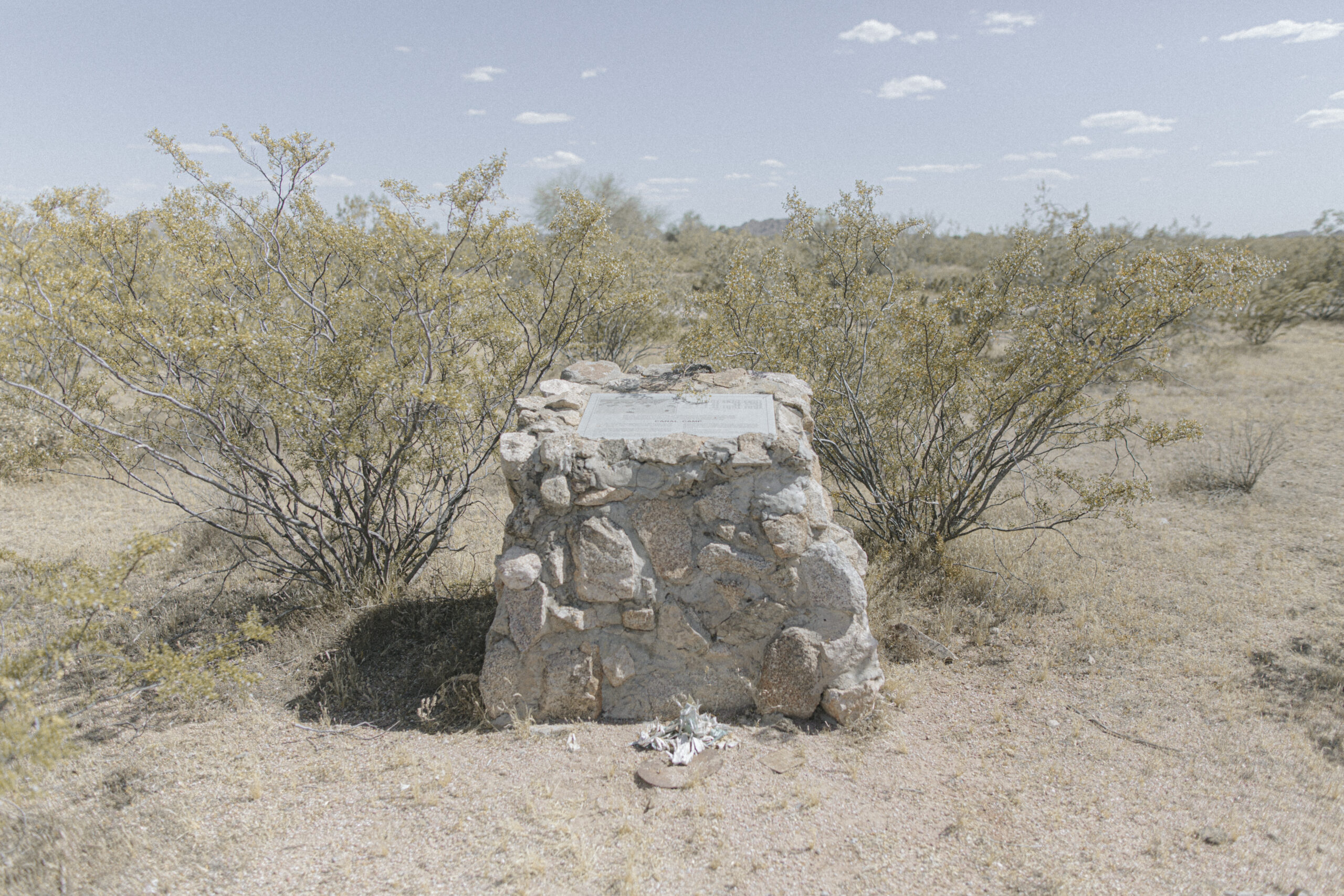
Another monument—built much later in 1995 with permission from the Gila River Indian Community—commemorates those who were incarcerated at the neighboring Canal section of the Gila River concentration camp.
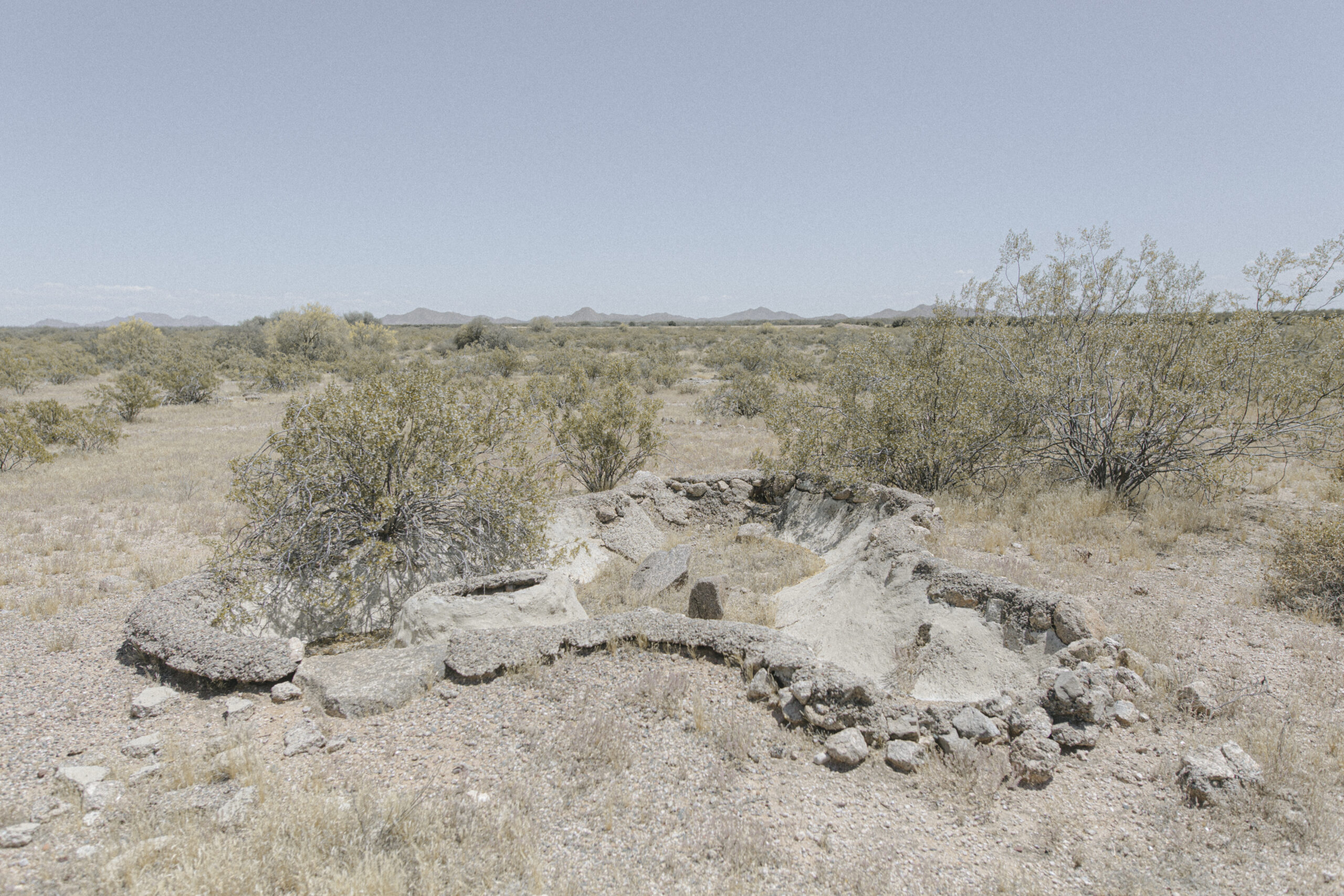
Gila River is dotted with hundreds of garden features like decorative pathways made of tin cans and ornamental stones. There are also dozens of concrete fish ponds like this one, which incarcerees built to stave off the Arizona heat.
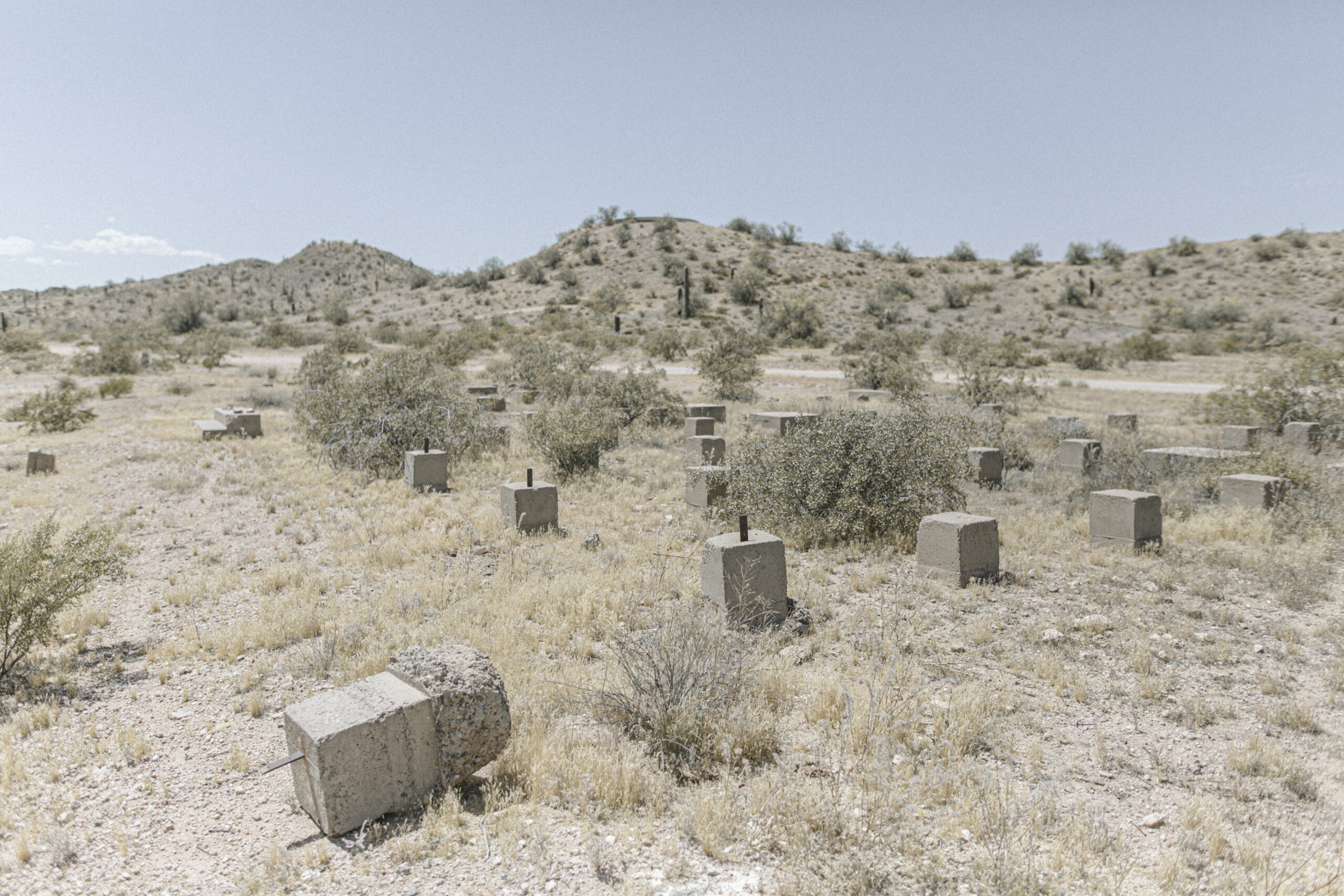
Many incarcerees prioritized continuing their children’s education while detained in camp. Foundations of classroom buildings for subjects like science, home economics and vocational arts remain at the site today.
Despite the difficult conditions, over half of the incarcerees worked within the camp, many of them cultivating crops. By the end of 1942, Gila River had already produced 242,000 pounds of fresh produce. Over time, the camp’s farms expanded, and by 1944, more than four million pounds of produce were being sent to other War Relocation Authority camps, helping to supply food for Japanese Americans incarcerated across the country.
However, misinformation and prejudice shaped how the local press portrayed incarcerees. Arizona newspapers falsely claimed that Japanese Americans were not contributing enough to the cotton harvest or the broader war effort. In October 1942, one newspaper incorrectly reported that only one in 100 incarcerees had volunteered to pick cotton and that resources, such as teachers, were being diverted from Arizona’s public schools to the camp.
These reports reached the highest levels of government, prompting First Lady Eleanor Roosevelt to personally visit Gila River on April 24, 1943. Her tour aimed to correct public misconceptions and highlight the valuable contributions incarcerees were making, both inside the camp and through military service.
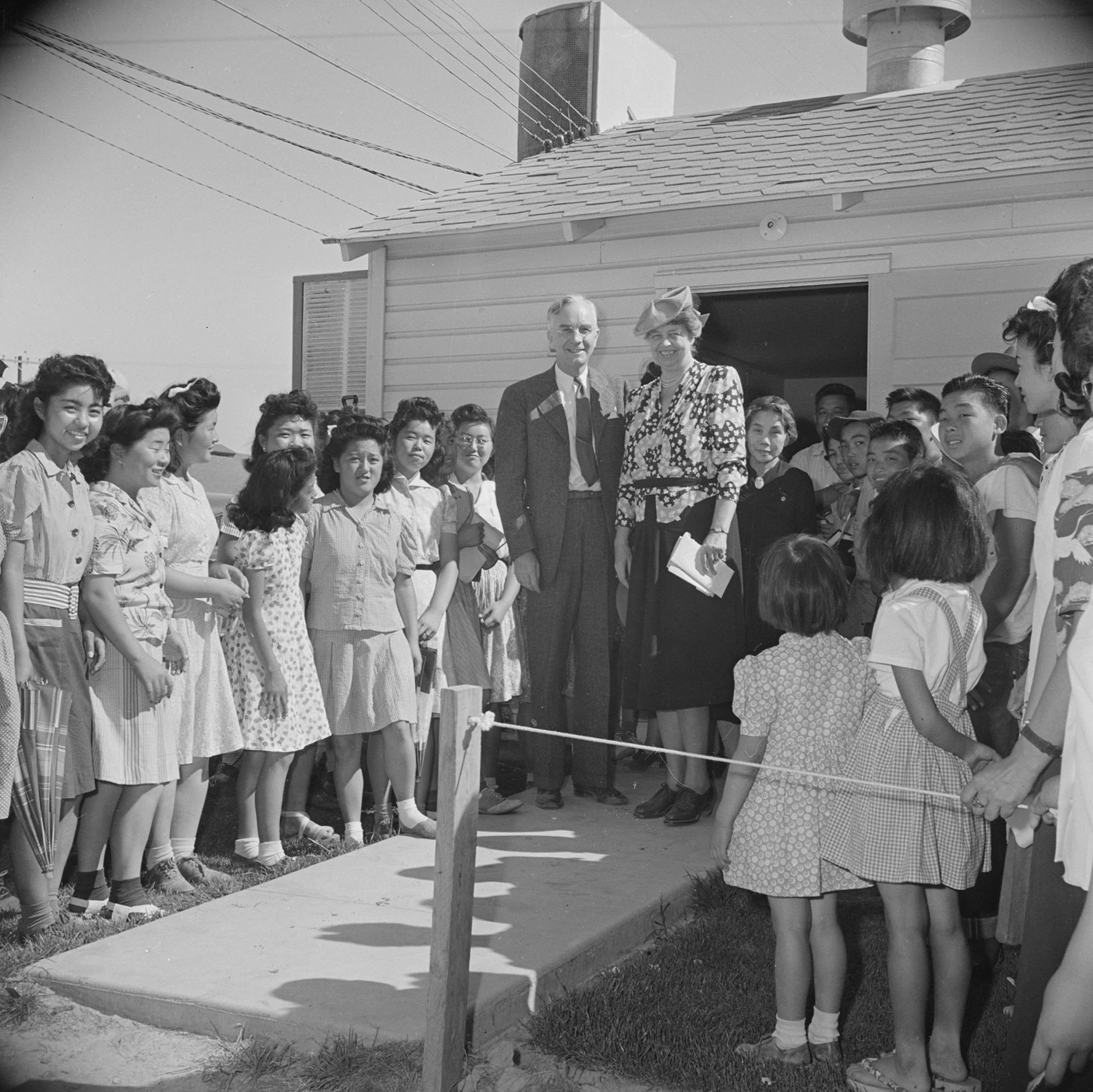
First Lady Eleanor Roosevelt, accompanied by National Director of the War Relocation Authority Dillon Myer, visits the Gila River concentration camp. April 23, 1943. Courtesy of the National Archives and Records Administration.
Gila River was one of the last War Relocation Authority concentration camps to shut down. The Butte camp closed on September 28, 1945, followed by Canal on November 10, 1945, with the entire site ceasing operations on November 16, 1945.
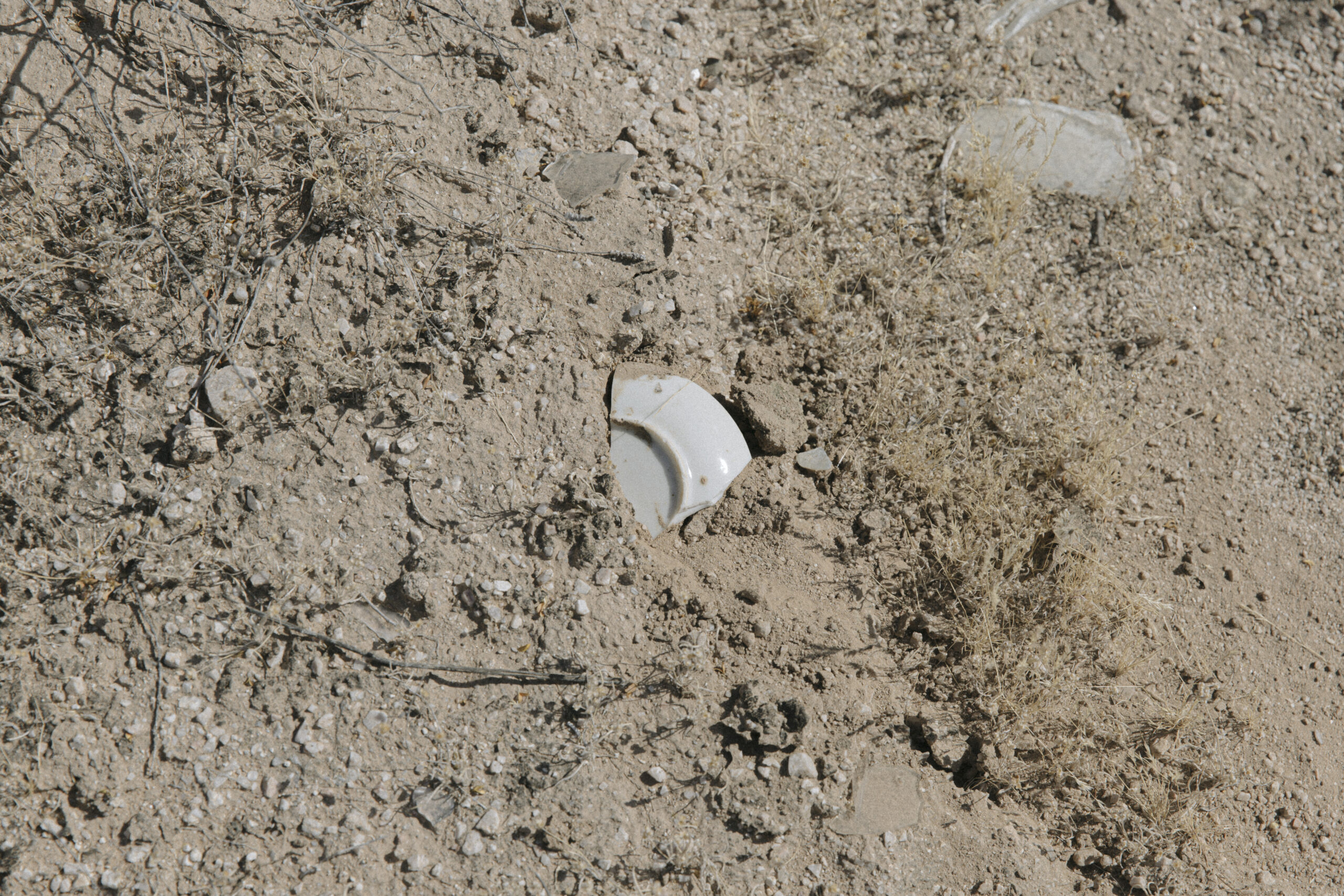
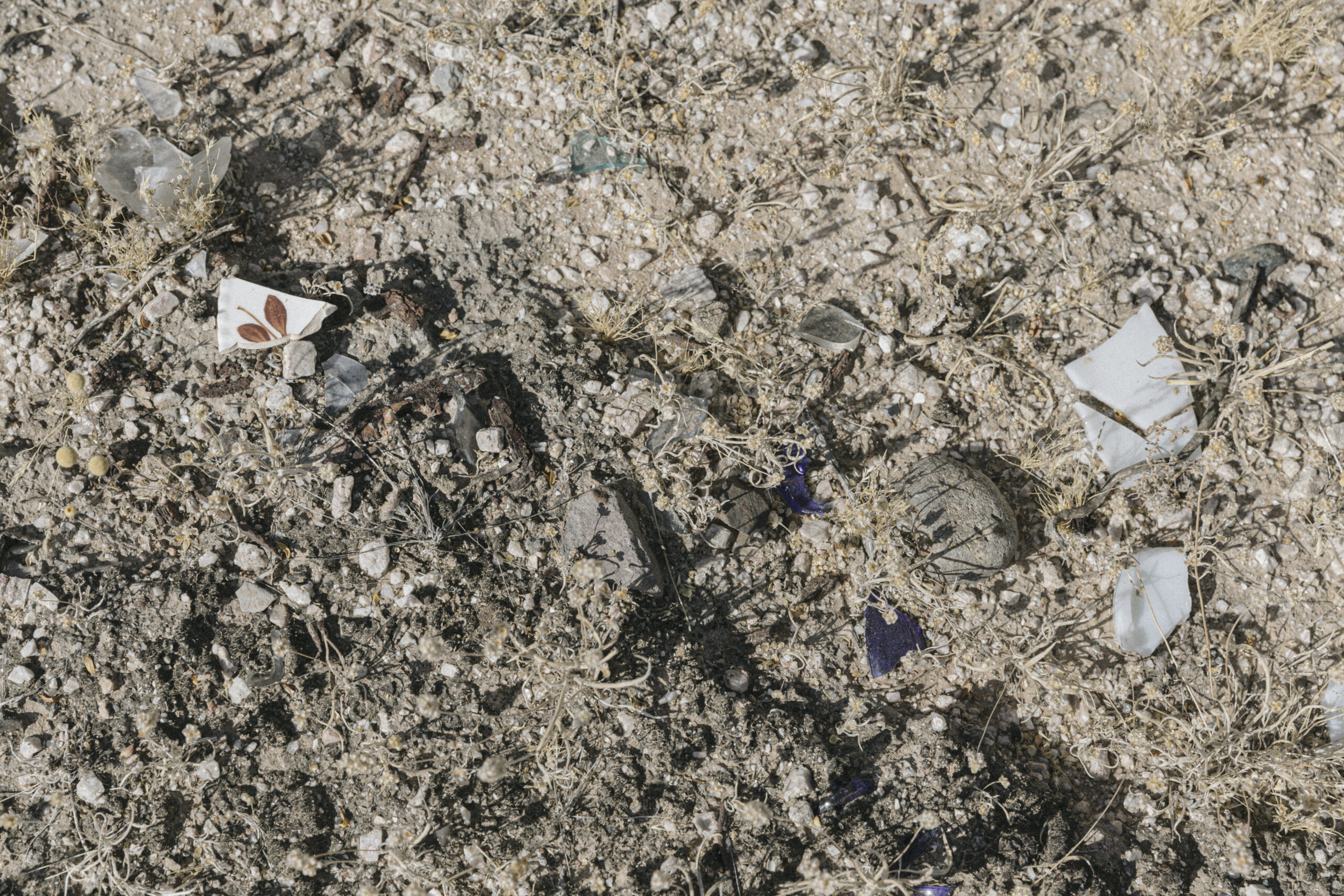
After the war ended, many incarcerees—especially older Issei—were hesitant to return to their home states due to fears of prejudice. However, they were not permitted to remain on Gila River Indian Community land. Hastily discarded ceramics, glassware and other household items remain at the site today.
Why is Gila River significant?
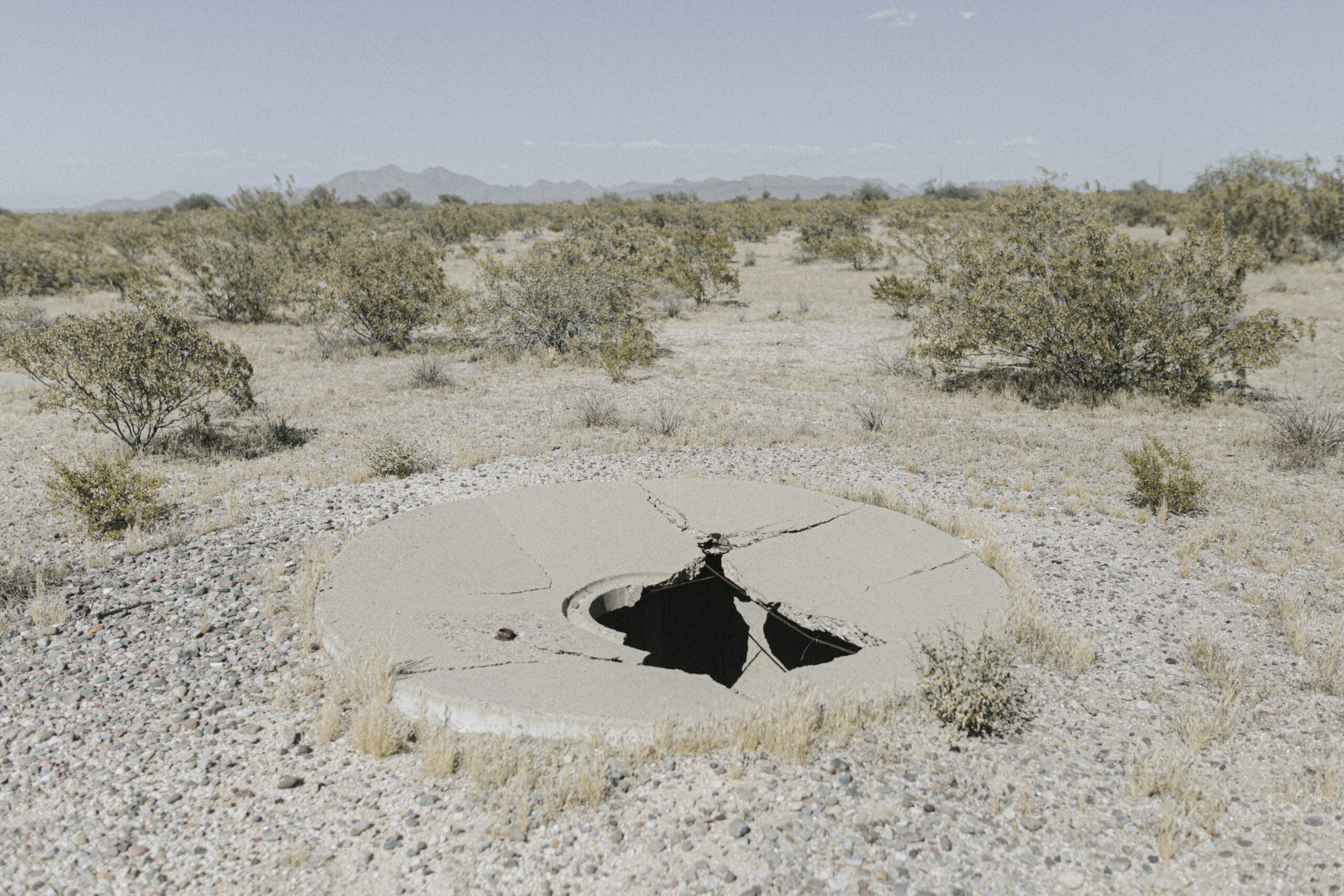
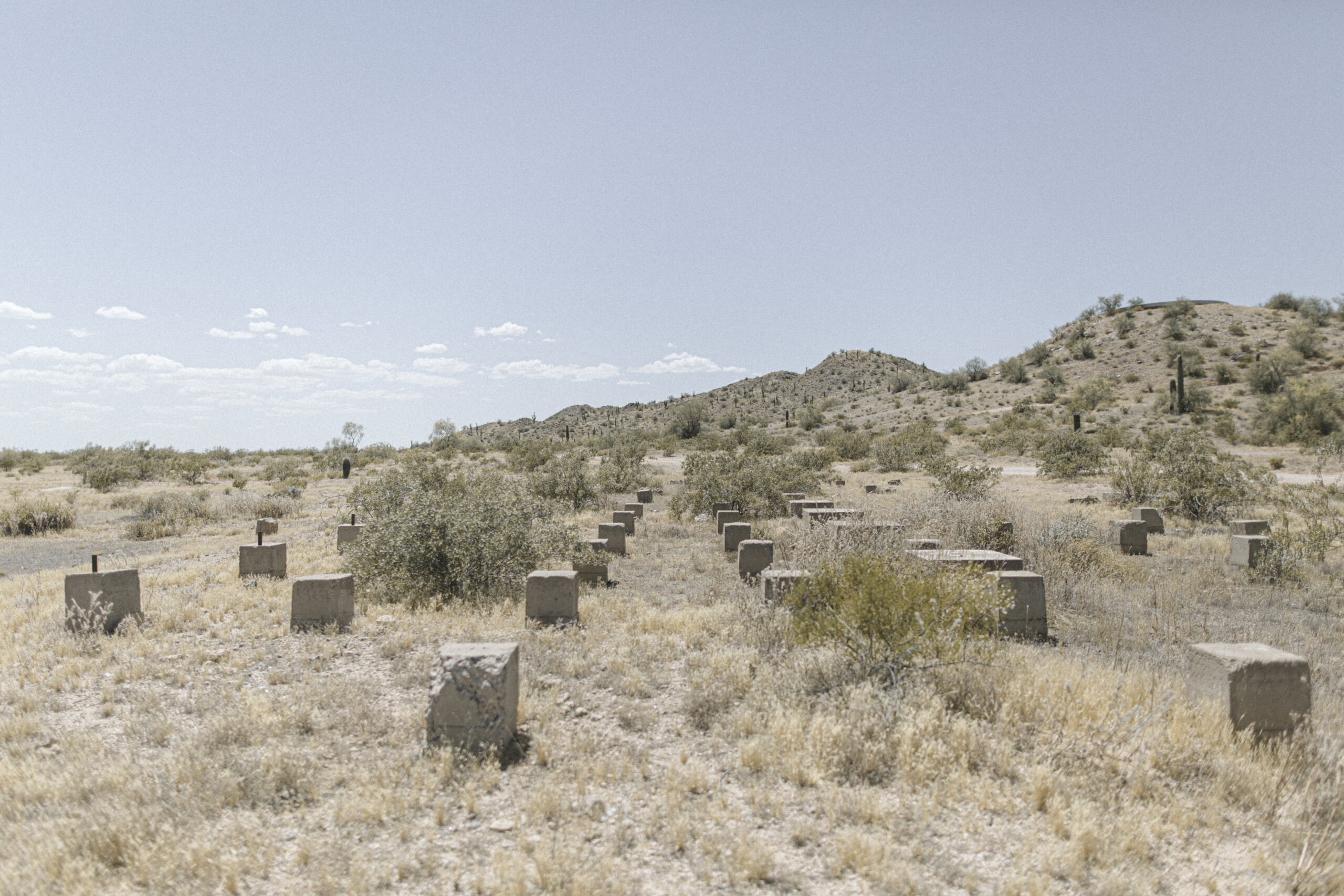
When the camp closed in 1945, the War Relocation Authority removed vital utilities like water and electricity and left behind broken cisterns, concrete foundations and piles of refuse in their place.
Before selecting Gila River as a site for the concentration camp, the War Relocation Authority considered several locations in Arizona, including Cortaro Farms, Fort Mohave, and Beardsley. However, those sites were ultimately rejected due to high construction costs or their proximity to military zones. Despite opposition from the Gila River Indian Community, the federal government moved forward with plans, officially choosing the site on March 18, 1942.
The War Relocation Authority leased the land from the Bureau of Indian Affairs under a five-year agreement, promising to develop agricultural lands and construct roads that would benefit the community in the long term. However, once the camp was dismantled in November 1945, the federal government failed to uphold its commitments. Instead of leaving behind usable farmland, the War Relocation Authority removed key infrastructure, including water pipes and electrical wiring. Additionally, no funds were allocated for clearing out the concrete foundations and other debris, leaving the Gila River Indian Community with unusable land.
Despite this difficult history, the Gila River Indian Community has worked alongside Japanese American organizations to preserve the site and facilitate annual pilgrimages for survivors and descendants.
Please note: The photographs on this page were taken with written permission from the Gila River Indian Community. This site is located on the sovereign lands of the Gila River Indian Community, and access is subject to the jurisdiction and authority of the Tribal Government. All visitors must obtain prior written permission from the Gila River Indian Community before entering. Unauthorized access is strictly prohibited.
This historical overview is informed by research from the Densho Encyclopedia (accessed in 2024), National Park Service (accessed in 2024), and interviews conducted during a visit to the camp in 2024.
